Experts address misconceptions about OPCON transfer
:The debate over OPCON transfer has been ongoing since the Park Chung-hee administration
June 25, 2010
The debate over transferring wartime operational control (OPCON) from the commander of the U.S. Forces Korea (USFK) to the South Korean Chairman of the Joint Chiefs of Staff has been long-standing. Proponents of delaying the transfer stress that the transfer of wartime operational control would result in an exit by USFK, and South Korea does not yet have the capacity to exercise command independently. They have also voiced criticism that the wartime operational control transfer was a rash decision by the Roh Moo-hyun administration that ignored grave security realities.
Was the Transfer of Command an Immature, Rash Decision by the Roh Administration?
Some conservatives consider the transfer of wartime operational control to have started with the warped “anti-American, self-reliant” ideology of the Roh administration and a populism reliant on nationalism. The first president to raise the issue of wartime operational control, however, was former President Park Chung-hee, who did so in the late 1960s. The South Korean and U.S. governments clashed over a response to North Korea’s commando assault on Cheong Wa Dae (the presidential office in South Korea or Blue House) on Jan. 21, 1968 and the North Korea’s capture of the U.S. intelligence gathering ship USS Pueblo two days later. This was because the United States issued no response to the attack on Cheong Wa Dae, but went to DEFCON 2 in response to the seizing of the Pueblo. Furious, Park asked the United States to transfer operational control to South Korea.
The transfer of wartime operational control was officially raised again as a campaign pledge by then-ruling party presidential candidate Roh Tae-woo. Discussions over the transfer issue were held between South Korean and U.S. military authorities, and on Dec. 1, 1994, during the Kim Young-sam administration, peacetime operational control was transferred back to South Korea. In 1995, the Defense Ministry crafted a plan to push for the transfer of wartime operational control around the year 2000.
Conservatives claim that a wartime operational control transfer will result in a USFK reduction or withdraw, or that it will become difficult for the United States to send reinforcements in wartime. Stationing U.S. troops in South Korea, however, is based on a bilateral mutual defense pact, and is not directly related to the transfer of wartime operational control. Experts have stated that even if the transfer of wartime operational control is delayed, one cannot exclude the possibility of decreases in U.S. troop strength in South Korea in the medium to long term because of the U.S. “strategic flexibility” strategy. This is to say, although the Combined Forces Command’s OPLAN 5027 calls for 690,000 U.S. troops to be dispatched to South Korea within 90 days of the start of a war, the military believes it will be hard for the U.S. to send more than 200,000 to 300,000 troops in an emergency as the U.S. has been tied down in the War on Terror since the Sept. 11, 2001 terrorist attacks.
Does South Korea Lack the Capacity to Exercise Wartime Operational Control Independently?
Most security experts believe South Korea has sufficient military strength to deter North Korea. South Korea remains a military power in strong standing, as it ranks 10th in the world in overall military spending and maintains the world’s sixth largest military. In fact, the National Intelligence Service (NIS) reportedly told Cheong Wa Dae last August that its research into a comparison in both countries’ military strength showed that even without USFK or wartime U.S. reinforcements, the South Korean military was 10 percent stronger than the North Korean military. Internationally recognized U.S. military expert James Dunnigan also once evaluated North Korea’s fighting strength as about 40 percent of South Korea’s capacity based on a 1995 assessment.
One reserve general said Thursday that the fluster the command experienced during the sinking of the Cheonan was largely the fault of the absence of independently planned or managed operations for around 60 years. He said the transfer of command could be turned into an opportunity to boost South Korea’s operational planning and management capacity.
Please direct questions or comments to [englishhani@hani.co.kr]
| ||||||||||

![[URGENT PLEA: In Update] EMERGENCY in GANGJEONG Since AUG. 24, 2011](http://2.bp.blogspot.com/-3iz8k-USXVY/TlmRYhhIYtI/AAAAAAAAL2c/9dbF85ZIkIs/s227/jejusit.jpg)
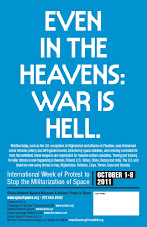
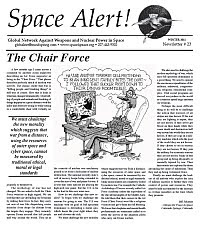

![[Solidarity from Japan for the Jeju] 253 individuals and 16 groups/organizations](http://2.bp.blogspot.com/_gnM5QlRx-4c/TR_YeNVE1yI/AAAAAAAAHWQ/ARyf6oQN0S0/S227/jeju_12_10j.jpg)
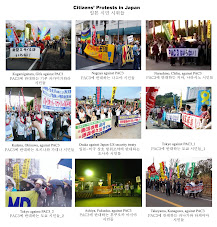
![[Translation] Korean organizations' statement: Immediately cancel the joint ROK-US drill Nov 26](http://2.bp.blogspot.com/_gnM5QlRx-4c/TPOE8VKXHFI/AAAAAAAAGlM/8lryt-8sFjc/S227/1.jpg)
![HOT! [Hankyoreh Hani TV] Beneath the Surface: the investigation into the sinking of the Cheonan](http://4.bp.blogspot.com/_gnM5QlRx-4c/TOI83qht8aI/AAAAAAAAGXU/22SW6Q5ntV8/S227/HaniTV%2BCheonan.gif)

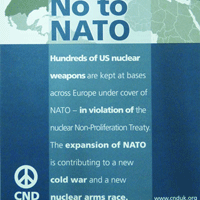

![[Translation]Statement against illegal inspection and unjust lay-off by the Kunsan USAFK!(Nov_2010)](http://4.bp.blogspot.com/_gnM5QlRx-4c/TOPLsVkZMqI/AAAAAAAAGZs/3YnnckIyAaY/S227/gunsan%2Bprotest.gif)
![[Translation] Korean organizations' statement against dispatching special force to the UAE on Nov.](http://4.bp.blogspot.com/_gnM5QlRx-4c/TOP95zHXlCI/AAAAAAAAGak/E0Ug1XtUFfM/S227/antiwarpeace.jpg)
![[Translation] Stop, Joining MD!: South Korean activists' statement and writing on Oct. 25, 2010](http://3.bp.blogspot.com/_gnM5QlRx-4c/TOP7Es4_2sI/AAAAAAAAGac/eWVMPD-U4p0/S227/StopMD.jpg)
![[In Update] People First, NO G-20 (Nov. 6 to 12, Korea)](http://2.bp.blogspot.com/_gnM5QlRx-4c/TJd53XBzHlI/AAAAAAAAFQo/ldO9JPE3eqo/S227/left21_G20.jpg)
![[International Petition] Stop US helipad plan in Okinawa to save great nature](http://4.bp.blogspot.com/_gnM5QlRx-4c/TKC2AHRNzBI/AAAAAAAAFUo/yGWXODTw_uM/S227/yanbaru_w.jpg)

![[Global Network] against the first launch of Quasi-Zenith Satellite, Japan, on Sept. 11, 2010](http://4.bp.blogspot.com/_gnM5QlRx-4c/TIowa1boy4I/AAAAAAAAFDI/82rAi98uq-c/S227/Qzss-45-0_09.jpg)

![[In update] Some collections on the Koreans’ protests against the sanction & war on Iran](http://4.bp.blogspot.com/_gnM5QlRx-4c/TJMvke6t8zI/AAAAAAAAFO4/tamQ8LUnOOA/S227/No+Sanction+on+Iran.jpg)
![[Three International Petitions] to End the Korean war and peace treaty(or peace resolution)](http://1.bp.blogspot.com/_gnM5QlRx-4c/THef7bzWxYI/AAAAAAAAE44/wwdzSDfYhdw/S227/border.jpg)
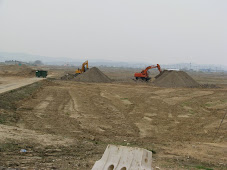


![[Collection of Documents] No Base Learning and Solidarity Program_Korea(June 14 to 20, 2010)](http://1.bp.blogspot.com/_gnM5QlRx-4c/TCTvVuN8NeI/AAAAAAAAEek/8vBJVaHdk10/S227/No-Base-banner.jpg)
![Site Fwd:[John Hines] A U.S. Debate coach’s research trip on the Issues of Korea](http://3.bp.blogspot.com/_gnM5QlRx-4c/TINCO36mzzI/AAAAAAAAE_w/Rds12NcBOXM/S227/Jeju-Peace-Tour.jpg)


![[News Update] Struggle Against the Jeju Naval Base since Jan. 18, 2010](http://1.bp.blogspot.com/_gnM5QlRx-4c/S1vvWaP25uI/AAAAAAAACkg/QvpW1tgOlKM/S226/scrum1.jpg)


![[Urgent] Please spread the Letter!: There was no Explosion! There was no Torpedo! (May 26, 2010)](http://4.bp.blogspot.com/_gnM5QlRx-4c/S_9JmsKEU7I/AAAAAAAAEP8/sAWjSPqxzUI/S227/grounded.jpg)
![Text Fwd: [Stephen Gowans]The sinking of the Cheonan: Another Gulf of Tonkin incident](http://1.bp.blogspot.com/_gnM5QlRx-4c/TAL_FtYKQ-I/AAAAAAAAERE/NEEMijiEcRM/S227/lee-myung-bak.jpg)
![[Japan Focus]Politics in Command: The "International" Investigation into the Sinking of the Cheonan](http://1.bp.blogspot.com/_gnM5QlRx-4c/TBMJ2syJzyI/AAAAAAAAEZU/uTYZccU5vyk/S227/wen_jiabao_and_lee_myungbak.png)
![[Japan Focus] Who Sank the SK Warship Cheonan? A New Stage in the US-Korean War and US-China](http://2.bp.blogspot.com/_gnM5QlRx-4c/S_iQ2vE5ZpI/AAAAAAAAEOU/Oo1SPcAe8FE/S227/buoy_map.gif)
![[Updated on 12/13/10] [Translation Project] Overseas Proofs on the Damages by the Military Bases](http://4.bp.blogspot.com/_gnM5QlRx-4c/S-qSj59gPLI/AAAAAAAAEGM/mwjlFtPE-jo/S227/missile.jpg)
![[International Petition] Close the Bases in Okinawa](http://3.bp.blogspot.com/_gnM5QlRx-4c/S8-z3DYNwNI/AAAAAAAADo4/OswTSchK09M/S227/2.jpg)

![[In Update]Blog Collection: No Korean Troops in Afghanistan](http://4.bp.blogspot.com/_gnM5QlRx-4c/SwnlLD9IewI/AAAAAAAAB9E/oUPssnpNidA/S226/No-Troops-to--Afghanistan.jpg)
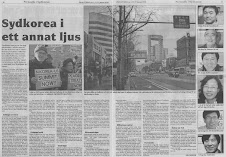

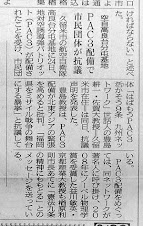

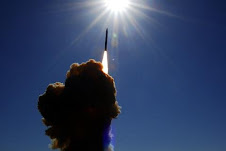






No comments:
Post a Comment